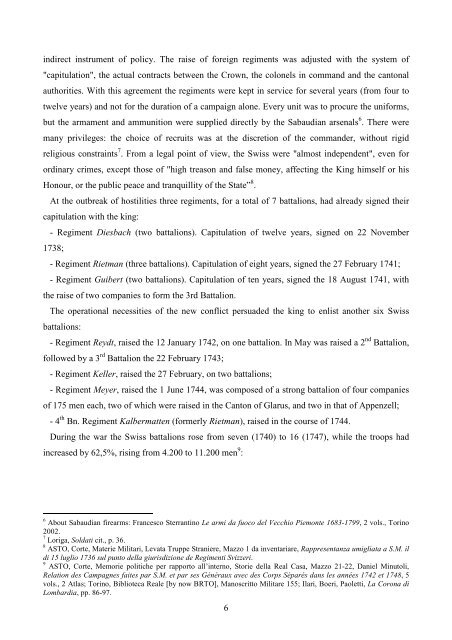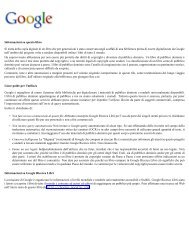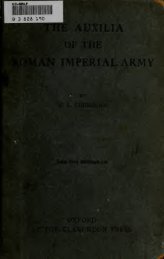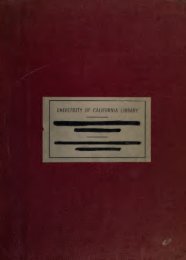Cerino-Badone, Swiss Regiments - Libreria Militare Ares
Cerino-Badone, Swiss Regiments - Libreria Militare Ares
Cerino-Badone, Swiss Regiments - Libreria Militare Ares
- No tags were found...
You also want an ePaper? Increase the reach of your titles
YUMPU automatically turns print PDFs into web optimized ePapers that Google loves.
indirect instrument of policy. The raise of foreign regiments was adjusted with the system of<br />
"capitulation", the actual contracts between the Crown, the colonels in command and the cantonal<br />
authorities. With this agreement the regiments were kept in service for several years (from four to<br />
twelve years) and not for the duration of a campaign alone. Every unit was to procure the uniforms,<br />
but the armament and ammunition were supplied directly by the Sabaudian arsenals 6 . There were<br />
many privileges: the choice of recruits was at the discretion of the commander, without rigid<br />
religious constraints 7 . From a legal point of view, the <strong>Swiss</strong> were "almost independent", even for<br />
ordinary crimes, except those of "high treason and false money, affecting the King himself or his<br />
Honour, or the public peace and tranquillity of the State” 8 .<br />
At the outbreak of hostilities three regiments, for a total of 7 battalions, had already signed their<br />
capitulation with the king:<br />
- Regiment Diesbach (two battalions). Capitulation of twelve years, signed on 22 November<br />
1738;<br />
- Regiment Rietman (three battalions). Capitulation of eight years, signed the 27 February 1741;<br />
- Regiment Guibert (two battalions). Capitulation of ten years, signed the 18 August 1741, with<br />
the raise of two companies to form the 3rd Battalion.<br />
The operational necessities of the new conflict persuaded the king to enlist another six <strong>Swiss</strong><br />
battalions:<br />
- Regiment Reydt, raised the 12 January 1742, on one battalion. In May was raised a 2 nd Battalion,<br />
followed by a 3 rd Battalion the 22 February 1743;<br />
- Regiment Keller, raised the 27 February, on two battalions;<br />
- Regiment Meyer, raised the 1 June 1744, was composed of a strong battalion of four companies<br />
of 175 men each, two of which were raised in the Canton of Glarus, and two in that of Appenzell;<br />
- 4 th Bn. Regiment Kalbermatten (formerly Rietman), raised in the course of 1744.<br />
During the war the <strong>Swiss</strong> battalions rose from seven (1740) to 16 (1747), while the troops had<br />
increased by 62,5%, rising from 4.200 to 11.200 men 9 :<br />
6 About Sabaudian firearms: Francesco Sterrantino Le armi da fuoco del Vecchio Piemonte 1683-1799, 2 vols., Torino<br />
2002.<br />
7 Loriga, Soldati cit., p. 36.<br />
8 ASTO, Corte, Materie Militari, Levata Truppe Straniere, Mazzo 1 da inventariare, Rappresentanza umigliata a S.M. il<br />
di 15 luglio 1736 sul punto della giurisdizione de Regimenti Svizzeri.<br />
9 ASTO, Corte, Memorie politiche per rapporto all’interno, Storie della Real Casa, Mazzo 21-22, Daniel Minutoli,<br />
Relation des Campagnes faites par S.M. et par ses Généraux avec des Corps Séparés dans les années 1742 et 1748, 5<br />
vols., 2 Atlas; Torino, Biblioteca Reale [by now BRTO], Manoscritto <strong>Militare</strong> 155; Ilari, Boeri, Paoletti, La Corona di<br />
Lombardia, pp. 86-97.<br />
6
















